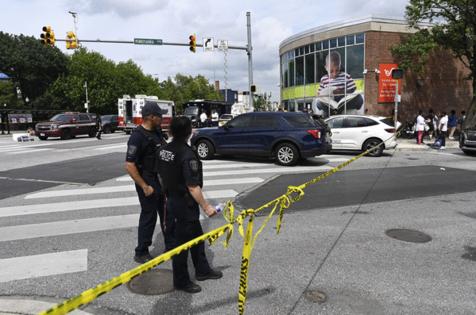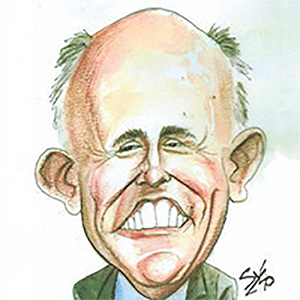'Good old days of heroin': Baltimore's opioid crisis
Published in News & Features
BALTIMORE — Early data show opioid overdose deaths are continuing to decline across Maryland this year, including in Baltimore. But the crisis is still entrenched in the city, which endured one of its largest mass overdose events on record in July, when more than two dozen people were sent to the hospital after ingesting a tainted batch of drugs in the Penn North neighborhood.
Public health experts The Baltimore Sun spoke with say the crisis persists in Baltimore for many reasons, but a lack of resources isn’t one of them.
“Baltimore is a place where you can, I sometimes joke, throw a stone and hit a buprenorphine treatment center,” said Marc Fishman, medical director at Maryland Treatment Centers, referring to the prescription medication used to treat opioid use disorder and manage severe pain. “It’s not for lack of slots. It’s not for lack of availability. It’s not for lack of beds.”
The city’s primary challenges, Fishman and others said, are sustaining people with opioid use disorder in treatment and coordinating existing services. The increasingly unpredictable drug supply is only complicating these issues.
“We’re … seeing more issues related to wound care from injection sites and from [fentanyl and tranquilizers] being in the supplies,” Meghan Westwood, chief of programs at Maryland Treatment Centers, said. “That can be a real barrier to getting people in care because your traditional treatment providers really don’t have the resources to provide that kind of wound care.”
The city’s struggle is also rooted in history. Fishman and Kevin Lindamood, President and CEO of Health Care for the Homeless, point to the lingering effects of Baltimore’s heroin epidemic of the 1970s and 1980s, which hit the city harder than other parts of the state.
Baltimore’s predominantly Black neighborhoods, hit hardest during the height of the heroin epidemic, remain among the most vulnerable to opioids. Today, older Black men in Baltimore are disproportionately affected by opioid use disorder, with those age 60 and older 4.6 times more likely to die of an overdose than white men in the same age group,” Dr. Letitia Dzirasa, the city’s deputy mayor of health and human services, said at a City Council hearing last month.
“Whoever thought we’d look back to the … good old days of heroin, right? What an alarming thing to say,” Fishman said. “And whoever thought we’d look back to say that only 85,000 deaths is a victory, right? But we’ll take what we can get.”
What needs to be done?
Public health experts say the city is not without options, but solutions require coordination, persistence and meeting people where they are.
“There are a lot of grassroots organizations already doing the work, but sometimes doing it in a siloed way,” Westwood said. She emphasized coordinating services to target “places, neighborhoods and communities” most in need.
Adrienne Breidenstine, vice president of policy and communications at Behavioral Health System Baltimore (BHSB), stressed that collaboration is vital.
“People come to our system of care through a variety of different access points. Sometimes it’s a referral through a school … Sometimes it’s through our 988 helpline. Sometimes it’s through law enforcement,” she said. “Whether it’s opioid overdose prevention or promoting access to treatment, we can’t do it alone.”
Breidenstine said expanding harm reduction initiatives is central. Her overdose response team, BMore Power, promotes messages such as: Never use opioids alone, use slowly and test supplies for fentanyl before use. Since 2020, her team has backed efforts to decriminalize or reduce penalties for drug paraphernalia possession in Maryland, including a 2025 House bill signed by Gov. Wes Moore.
“Substance use has been stigmatized so much. There’s so much shame and blame associated with drug use and alcohol use,” Breidenstine said. “We want to really approach and meet people where they’re at and come from a place of non-judgement … even if it’s just trying to have a goal of using less.”
Lindamood echoed this call to listen to people with lived experience. “The goal cannot be what we might magically think that goal should be. We have to ask those that we’re serving,” he said, adding that any type of treatment would be made far more effective if paired with stable housing and other supports that address other social determinants of health.
Westwood and Fishman urged a more immediate approach to outreach: “As treatment providers, we can’t be sitting in our facilities waiting for them to come. We need to be assertive. We need to outreach into communities. We need to engage faith-based communities, community center schools,” Westwood said.
Experts also stressed that while law enforcement has a role in addressing Baltimore’s opioid crisis, heavy — and historically violent — police involvement can be a deterrent.
“Dealing with things like addiction, mental health [distress], homelessness through the criminal justice system … is utterly counterproductive,” Lindamood said. “People come out with criminal records. It becomes harder for us to serve them. They become ineligible for certain programs because of those criminal records. It just ends up causing more harm.”
Recently, Councilman Mark Conway also argued that the city’s law enforcement agencies failed to present a clear, concise, coordinated plan to address the city’s opioid overdose problem, although he applauded its progress in violence reduction.
The Mayor’s Office of Overdose Response
Over a year ago, Mayor Brandon Scott announced the Opioid Restitution Fund and Overdose Response Strategic Plan, which were created to distribute funds from lawsuits won against pharmaceutical companies to community organizations and government programs.
Breidenstine’s organization serves as a behavioral health expert on the Opioid Restitution Fund Advisory Board, which advises the mayor’s office on how the money is spent.
“You need a plan so that … everybody knows where you want to be focusing your energy and time as a collective, so that’s where I think the opioid strategy is really valuable — not just for BHSB but all of the city members,” she said.
Though still in its early stages, Mayor Scott’s initiatives — aimed at “meeting people where they are” — have experts cautiously optimistic about their potential to reduce overdose deaths in Baltimore City.
“I don’t know whether [the mayor’s office] will pull it off or not, but it’s the right place to go. The good news is that the almost $600 million in restitution money is not chump change. I just hope that it is deployed in a coordinated, rational and congruent way that gets bang for the buck,” Fishman said.
©2025 Baltimore Sun. Visit baltimoresun.com. Distributed by Tribune Content Agency, LLC.







Comments